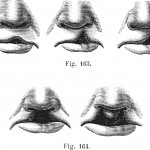
Cleft lip and palate is a relatively common birth defect that occurs in around 1 in 700 births and there have been contradictory reports of caries prevalence in CLP populations with some studies finding no difference and others an increase in prevalence. The aim of this review was to evaluate caries prevalence in non-syndromic patient populations with Cleft lip and/or palate (CLP), in comparison with matched non-CLP populations.
The Medline, Embase, Scopus, Web of Science, CINAHL, and the Cochrane Library databases were searched for studies evaluating caries prevalence in non-syndromic CLP with no date, language or publication restrictions. Cross-sectional or longitudinal studies with suitable controls were included. The main outcome was caries prevalence in CLP patients at any given time point. Two reviewers conducted study selection independently. Quality and risk of bias were assessed and a random effects meta-analysis was performed.
- 7 cross-sectional studies involving a total of 474 CLP patients and 474 matched controls were included.
- 4 studies were considered to be of good quality, 2 medium and 1 poor.
- Data from 5 studies suggest that CLP patients have a higher number of DMF teeth than the controls with a mean difference of 1.38; (95% CI 0.48-2.28) p = 0.003.
- For deciduous teeth, data from 4 studies suggest that CLP patients have a higher number of dmf teeth than the controls with a mean difference of 1.51; (95% CI 0.19-2.83) p = 0.03.
The authors concluded
Non-syndromic patients with CLP tend to have higher caries prevalence, both in the permanent and the deciduous dentition, in comparison with matched non-CLP controls.
Comment
Meta-analyses have been presented for DMFS, DMFT, DT, MT, FT and dmft. Several of them include values for up to three different age groups within an individual study. It is not clear what these different age groups were and a separate analysis by each age group may have been preferable. All the included studies were cross-sectional studies and the authors highlight some of the issues with the individual studies some of which arise form a lack detail in the original studies. They also consider some of the possible reason why those with CLP may have higher caries prevalence. In an previous systematic review published in 2007 Hasslöf and Twetman identified 6 studies sex and age-matched controlled studies and
was unable to find firm evidence for the assumption that CLP children have an increased prevalence of dental caries.
While this review may suggest a higher caries incidence in CLP the small number of studies and the limited quality leaves some room for doubt.
Links
Antonarakis GS, Palaska PK, Herzog G. Caries Prevalence in Non-Syndromic Patients with Cleft Lip and/or Palate: A Meta-Analysis. Caries Res. 2013;47(5):406-13. doi: 10.1159/000349911. Epub 2013 May 3. PubMed PMID: 23652859.
Hasslöf P, Twetman S. Caries prevalence in children with cleft lip and palate–a systematic review of case-control studies. Int J Paediatr Dent. 2007 Sep;17(5):313-9. Review. PubMed PMID: 17683319.

“@TheDentalElf: Review suggests cleft lip and or palate patients may have higher prevalence of caries http://t.co/KFwApzaETj”